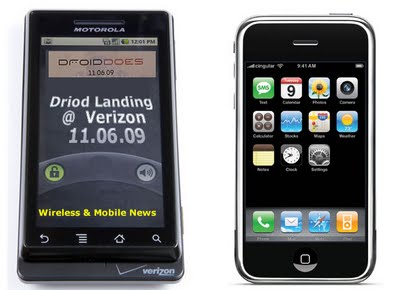Opening a retail store can be a thrilling adventure, but it requires careful planning and execution. This guide will walk you through the essential steps to ensure your store is set up for success. From creating a solid business plan to launching your store, each step is crucial in building a thriving retail business.
Key Takeaways
- Create a detailed business plan to outline your store’s goals and strategies.
- Choose a location with good foot traffic and accessibility.
- Understand the legal requirements for starting your business, including permits and licenses.
- Build strong relationships with suppliers to ensure a steady inventory.
- Develop a marketing plan to attract customers and promote your grand opening.
Developing a Solid Business Plan

Creating a solid business plan is one of the first steps I took when starting my retail store. This plan serves as a roadmap for my business, guiding me through the ups and downs. Here’s how I approached it:
Identifying Your Niche Market
I began by figuring out what makes my store unique. I asked myself:
- What products do I want to sell?
- Who are my ideal customers?
- What problems do my products solve for them?
Setting Clear Business Goals
Next, I set specific goals for my business. These goals help me stay focused and measure my success. Some examples include:
- Achieving a certain sales target in the first year.
- Expanding my product line within two years.
- Building a loyal customer base.
Conducting Market Research
I spent time researching my market. This included:
- Analyzing competitors to see what they offer.
- Understanding customer preferences through surveys.
- Keeping an eye on industry trends.
Creating a Financial Plan
Finally, I put together a financial plan. This plan includes:
- Estimated startup costs.
- Projected monthly expenses.
- Expected revenue for the first year.
A well-thought-out business plan is crucial for securing funding and visualizing my goals. It’s one of the most important elements of your business plan.
By following these steps, I felt more prepared to launch my retail store and navigate the challenges ahead.
Securing Funding and Financial Planning

When I decided to open my retail store, I quickly realized that securing funding was one of the most important steps. Without the right financial backing, my dream could easily fall apart. Here’s how I approached this crucial phase:
Exploring Funding Options
I looked into various funding options to find the best fit for my needs. Here are some common sources:
- Personal Savings: Using my own money to kickstart the business.
- Bank Loans: Traditional loans from banks can provide a significant amount of capital.
- Grants: Some organizations offer grants that don’t need to be paid back.
- Investors: Bringing in investors can help, but it often means giving up some control.
Budgeting for Initial Costs
Next, I created a budget to cover my initial costs. This included:
- Rent for the store location.
- Inventory to stock the shelves.
- Marketing to get the word out about my new store.
- Utilities and other operational costs.
Managing Cash Flow
Once I had funding, I had to keep a close eye on my cash flow. I learned that it’s essential to:
- Track all income and expenses.
- Set aside money for unexpected costs.
- Regularly review my financial situation to make adjustments as needed.
Planning for Contingencies
I also made sure to plan for the unexpected. This meant:
- Having a backup plan if sales were lower than expected.
- Setting aside an emergency fund to cover at least three months of expenses.
- Being flexible and ready to adapt my business strategy if necessary.
In my experience, having a solid financial plan is key to success. It not only helps in securing funding but also ensures that I can navigate the ups and downs of running a retail store.
By following these steps, I felt more confident in my ability to secure the funding I needed and manage my finances effectively. This foundation was crucial as I moved forward with my retail journey.
Choosing the Perfect Location

Finding the right spot for my retail store is crucial. Location can make or break my business. Here are some key factors I consider:
Analyzing Foot Traffic
I need to look for areas with high foot traffic. This means more potential customers walking by my store. I often check:
- Busy streets
- Shopping centers
- Local events
Considering Competitor Proximity
I also think about nearby competitors. If there are many similar stores, I need to ask myself:
- Will this help attract more customers?
- Or will it make it harder for me to stand out?
Evaluating Accessibility
Accessibility is important too. I want my store to be easy to reach for everyone, including those with disabilities. I check for:
- Parking availability
- Public transport options
- Sidewalks and ramps
Negotiating Lease Terms
Once I find a good location, I need to negotiate the lease. I focus on getting fair terms that won’t hurt my budget.
Remember, the right location can lead to more sales and a successful business.
In summary, choosing the perfect location involves understanding my target customers, analyzing foot traffic, and considering competition. By focusing on these areas, I can set my retail store up for success!
Navigating Legal Requirements

Starting a retail store means I have to deal with some important legal stuff. Understanding these requirements is crucial for my success. Here’s what I need to keep in mind:
Registering Your Business
First, I need to choose a name for my store. It should reflect my brand and be unique. After that, I’ll register my business with the state. This includes:
- Picking a business structure (like LLC or corporation)
- Getting an Employer Identification Number (EIN) from the IRS
- Checking local requirements for licenses and permits
Obtaining Necessary Permits
Next, I’ll need to get the right licenses and permits. This can vary by state, but common ones include:
- A basic business operation license
- A seller’s license, depending on what I sell
- Any local permits required for my specific industry
Understanding Zoning Laws
I also have to be aware of zoning laws. These laws dictate where I can set up my store. I’ll need to check with my local government to ensure my chosen location is compliant.
Choosing a Business Structure
Finally, I must decide on a business structure. This choice affects my taxes and personal liability. For example, an LLC can help protect my personal assets if my business faces issues.
Navigating these legal requirements can be tricky, but it’s essential for running a successful retail store. I might want to consult a business attorney to help me through this process.
By following these steps, I can ensure that my retail store is legally compliant and set up for success. Remember, covering the legal basics is just as important as having a great product!
Designing and Setting Up Your Store
Creating an Inviting Layout
When I think about designing my retail store, the layout is one of the first things that comes to mind. A well-thought-out layout can make a big difference in how customers feel when they enter. I want to create a space that feels welcoming and easy to navigate. Here are some tips:
- Use clear signage to guide customers.
- Arrange products in a way that encourages browsing.
- Ensure there’s enough space for customers to move around comfortably.
Selecting Fixtures and Equipment
Next, I need to choose the right fixtures and equipment. This includes shelves, display cases, and checkout counters. I want to make sure these items not only look good but also serve a purpose. For example:
- Shelves should be sturdy and adjustable.
- Display cases should highlight my best products.
- Checkout counters should be efficient for quick transactions.
Implementing Security Measures
Security is another important aspect. I want to protect my store and my customers. Here are some measures I plan to take:
- Install security cameras at key points.
- Use alarm systems to deter theft.
- Train staff on how to handle suspicious activities.
Ensuring Accessibility
Finally, I must ensure my store is accessible to everyone. This means considering the needs of differently-abled customers. I’ll make sure to:
- Provide ramps and wide aisles.
- Use clear signage with large fonts.
- Train staff to assist customers with special needs.
Designing my store is not just about aesthetics; it’s about creating a space where customers feel comfortable and valued.
By focusing on these areas, I can create a retail environment that not only attracts customers but also keeps them coming back. Remember, the goal is to make shopping a pleasant experience!
Building a Strong Vendor Network
When I think about starting my retail store, one of the most important steps is building a strong vendor network. The vendors I choose can really affect my business, from the quality of products to how quickly I can get them on my shelves. Here’s how I approach this:
Identifying Reliable Suppliers
- Set a budget: I always start by figuring out how much I can spend on products, including shipping costs.
- Request samples: I ask for samples from potential vendors to check the quality of their products firsthand.
- Research reputations: I look into what other businesses say about the vendors. A good reputation is key for reliability.
Negotiating Contracts
- I make sure to discuss terms clearly with my vendors. This includes delivery times and payment terms.
- I also consult with a lawyer to ensure everything is fair and legal.
Managing Inventory
- I keep an open line of communication with my suppliers about my inventory needs. This helps me avoid running out of popular items.
- I also define performance metrics to evaluate how well my vendors are meeting my needs.
Building strong relationships with my vendors is crucial. If something goes wrong, I address it immediately to prevent small issues from becoming big problems.
In summary, having a solid vendor network is essential for my retail success. It’s not just about finding the cheapest option; it’s about finding partners who can help my business grow. A reliable vendor can make all the difference!
Marketing and Launching Your Retail Store
Creating a Marketing Plan
When I think about launching my retail store, creating a marketing plan is one of the first things that comes to mind. I need to make sure my store stands out in a crowded market. Here are some key points I focus on:
- Identify my target audience: Who am I trying to reach?
- Choose the right channels: Should I use social media, email, or local ads?
- Craft a unique message: What makes my store special?
Utilizing Social Media
Social media is a powerful tool for getting the word out. I make sure to:
- Create engaging posts that showcase my products.
- Interact with my followers to build a community.
- Use hashtags to reach a wider audience.
Planning a Grand Opening
A grand opening is a great way to kick off my store. I plan it carefully to attract as many people as possible. Here’s what I do:
- Set a date: I choose a day when people are likely to be free, like a Saturday.
- Promote it: I use social media and local news to spread the word.
- Offer special deals: Discounts or giveaways can draw in crowds.
A successful launch is just the beginning. I need to keep the excitement going with ongoing marketing efforts.
Engaging with the Community
Building relationships in my community is crucial. I:
- Attend local events to meet potential customers.
- Partner with other local businesses for cross-promotions.
- Get involved in community projects to show I care.
By focusing on these strategies, I can effectively market and launch my retail store, ensuring it gets the attention it deserves. Creating a Google Business profile is also a must, as it helps customers find my store easily!
Conclusion
Opening a retail store can be a thrilling journey, but it requires careful thought and planning. By understanding your customers and what makes your store special, you can create a place that stands out. Remember to choose a great location, follow the legal steps, and market your business effectively. A successful grand opening can set the tone for your store’s future. Keep in mind that providing excellent service and a unique shopping experience will help you build loyal customers. With the right approach, your retail store can thrive in today’s competitive market.
Frequently Asked Questions
What is the first step to opening a retail store?
The first step is to come up with a solid business idea and write a detailed business plan.
How can I find the right location for my store?
Look for areas with good foot traffic, check out nearby competitors, and make sure there’s parking available.
What types of permits do I need to open a retail store?
You will need a basic business license, an employer identification number (EIN), and possibly a seller’s license depending on what you sell.
How do I create a marketing plan for my store?
Think about how to reach your customers through social media, email, and local ads. Be creative and offer promotions.
What should I include in my financial plan?
Your financial plan should cover startup costs, how you’ll manage cash flow, and savings for unexpected expenses.
How can I build a good relationship with suppliers?
Communicate clearly with your suppliers, set expectations from the start, and address issues quickly to maintain a strong partnership.







